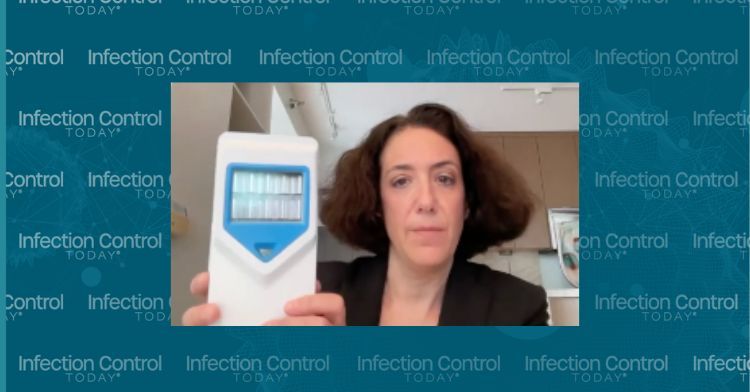Infection
Handheld UV-C Technology: A Solution to Combat Health Care-Associated Infections
UV light has been used for disinfection purposes for decades. However, due to its harmful effects on human exposure, it can only be used in specific situations. To overcome this challenge, expand the scope of its effective disinfection properties, and continue the fight against health care-associated infections, the Central Texas Veterans Health Care System conducted a study.
The study was led by Piyali Chatterjee, PhD, research investigator chair, Subcommittee for Scientific Review (SSR), at Central Texas Veterans Health Care System and her team. The feedback received from the participants highlighted various themes such as time usage, complexity, safety for both patients and nurses, and the device’s technological characteristics. After being given the opportunity to interact with a prototype of a handheld filtered Far UV-C device, the participants showed openness to the idea and provided constructive feedback on the potential uses of such a device and design elements that would facilitate its adoption. The full peer-reviewed study is published in Nursing & Health Sciences.
Infection Control Today® (ICT®) spoke with Jennifer Rosen, BA, cofounder of Freestyle Partners with Ben Feeney, BS, to learn more about the study. Watch the video above for an in-depth discussion of the study and the reasons for it. In addition, Chatterjee answered questions as well about the key findings of the study, practical applications, and more.
Jennifer Rosen, BA, cofounder of Freestyle Partners, demonstrated the Far UV-C handheld device during the interview with Infection Control Today.
ICT: Please give a summary of the key findings of the study and why they are important.
Piyali Chatterjee, PhD: An important finding that emerged stemming from our work for use of a new far UV-C handheld disinfection device prototype from one end-user group is that they are open to the idea of use of such a device but identified additional barriers such as time, access, surface complexity, workload, and workflow that would need to be addressed in the future. In addition, they provided valuable feedback on re-design considerations, including size, shape, weight, safety, durability, and surface capacity about this prototype that can positively influence uptake in practice, as well as considerations for practice environments that support infection prevention workload.
ICT: What is the practical application for this study’s key findings for infection preventionists?
PC: Practical applications of our work include possibility in the future of use of a re-designed far UV-C device, especially for hospital surfaces that are not amenable to standard disinfection practices due to corrosion etc.
ICT: What results surprised you, if any?
PC:End-users who participated in usability and design decisions for this study gave the idea that disinfection is a workload that may not be factored into staffing levels and warrants further attention by hospital, nursing, and infection prevention leadership.
ICT: What, if any, future research will there be related to this one?
PC:Our present study is limited to an acute care hospital nursing staff feedback as an end-user of this new far-UVC disinfection technology. However, future larger study should also include input & feedback opportunities from other key end-users at multiple facilities.
ICT: Is there anything else that you would like to add?
PC: This study actually provides valuable staff input during technology development, and integrating these [sic] input/feedback may lead to future successful implementation efforts.
(Chatterjee’s written answers are published exactly as they were sent in as required for publication.)

